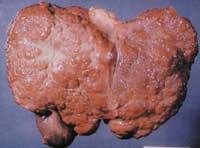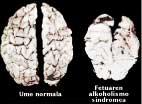Are women most vulnerable to alcohol?
2002/04/01 Callado Hernando, Luis Felipe Iturria: Elhuyar aldizkaria
Women and alcohol

According to statistics, women who drink alcohol are less than men. What's more, women who drink alcohol drink less than men. However, in recent years the consumption of female alcohol has increased considerably: although two decades ago the male/female relationship of alcohol drinkers was 10/1, at present it is 3/1.
In women, alcohol-related problems are due to genetic/biological, socio-cultural or psychological factors. Among the biological factors are family problems with alcohol and biological vulnerability to the effects of alcohol. Psychosocial factors include addiction to drug addiction, depression or any other psychiatric illness, stressful episodes (especially mistreatment) and sexual assaults.
In comparison with men, alcoholic women have certain peculiarities: alcohol consumption begins later, tends to drink alone, have feelings of guilt, have more suicide attempts, have a closer relationship with traumatic psychological facts, go before to seek treatment and, although they drink less than men, the physical problems derived from alcohol begin before.
Harmful effects of alcohol

As is known, alcohol consumption has harmful consequences for our organism: In Spain alcohol causes 13,000 deaths a year, which accounts for 6% of all deaths. Although alcohol can affect all organs of both women and men, it seems that women are more vulnerable to the physical effects of alcohol. The mortality rate of alcohol-dependent women is between 2 and 7 times higher than that of non-drinking women. In the same vein, according to a study with women, alcohol abuse reduces life expectancy by about 15 years. This reduction is mainly related to liver diseases, traffic accidents and suicides.
In comparison with men, women suffer short-term liver diseases and with lower alcohol consumption. Some people who drink excess alcohol have hepatitis or inflammation of the liver and, if they continue drinking, a cirrhosis may appear. The main cause of liver cirrhosis is alcohol, but hepatitis by alcohol in women becomes cirrhosis in the short term. Furthermore, women cirrhosis die before men.
To explain this bad evolution there are two great theories. One argues that women's sex hormones can stimulate the incidence of alcohol; the other argues that premature death may be due to the different function of liver cells in women and men. It seems that women more quickly remove alcohol from the blood to liver cells. It is known that women have a higher volume of liver per unit of body mass and it seems that this is why they expel alcohol faster.

A high amount of alcohol and prolonged consumption can lead to heart disease such as hypertension, heart disease, or coronary heart disease. According to a study conducted among enthusiastic drinkers, the risk of heart disease is similar in both men and women. However, it must be taken into account that the alcohol consumption of the analysed women remained 60% below that of the men.
A study with magnetic resonance highlights that women are more vulnerable to brain damage caused by alcohol than men. In the study, it was observed that the corpus callosum (important group of transversal fibers between the right and left hemispheres), essential to coordinate various functions of the brain, was lower in alcoholic women than in non-alcoholic and alcoholic men. On the other hand, similar abnormalities were detected in the brain surfaces of women and alcoholic men, but women drank less alcohol and less time.
Women who drink alcohol moderately or in excess have a higher risk of breast cancer. In women who drink less than 60 g of alcohol a day, there is a higher risk of alcohol consumption.

They are one of the most common consequences of alcohol consumption. Alcohol consumption is related to the lack of menstruation, abnormal menstruation, and the appearance of premenstrual syndrome. In addition, alcoholism can alter the function of the ovaries. Studies with animals have shown that alcohol alters the regularity of the ovulation cycle by causing defective ovulation. These problems can be due directly to alcohol (due to interference in hormonal regulation) or to pathological problems caused by alcohol abuse (liver diseases, diseases of the area, malnutrition...).
On the other hand, alcohol consumption can cause serious problems during pregnancy. As mentioned above, alcohol can cross the placental barrier and act on the fetus. The intensity of the impact will vary depending on the amount of alcohol, the duration of consumption, the metabolism of the mother and interactions with other substances. In general, consumption of more than two glasses during pregnancy is related to miscarriages, low-weight fetuses, preterm children, and a higher mortality rate around the birth. However, the main consequence of alcohol consumption in newborns is fetal alcohol syndrome. This syndrome produces severe dysfunctions of the central nervous system, problems of prenatal and postnatal growth, cranial and facial alterations.

Driving under the effects of alcohol is one of the main causes of traffic accidents. Alcohol, in addition to impairing sensory perception (hearing and vision) and psychomotor function, alters the behavior of the person. These effects depend on the concentration of alcohol in the blood, that is, the higher the concentration of weakness. When the alcohol level is higher than 0.04-0.05 g/l, attention is reduced, euphoria appears and, in general, as confidence increases in the ability, it leads too bold and dangerous. According to some studies, these effects are more violent in women. Thus, despite a similar concentration of alcohol in the blood, women are at higher risk for a car accident.
The suicide rate of alcoholics is much higher than that of the normal population. Alcoholic women under the age of forty make five times more suicide attempts than non-alcoholic women. In countries like Switzerland or Canada, the relationship between alcohol and suicide is narrower in women than in men. Alcohol-related physical diseases appear as a result of the toxic effect of alcohol, while the relationship between alcohol and suicide is more complex.

Two theories have been published to explain why alcohol increases the risk of suicide. One highlights the devastating social consequences of chronic alcohol abuse and the other the risks associated with serious intoxication. Depending on the social situation of women, women can be more vulnerable to these effects of alcohol, that is to say, having less social acceptance than men, alcoholic women will suffer a greater social destructuring that can lead to suicide.
On the other hand, many alcoholic patients suffer a depression that increases the risk of suicide. Both problems appear more at a time in women.
Conclusions of the conclusions: Conclusions
As the number of women who drink alcohol increases, we have begun to take into account the differences between women and men. Thus, for example, we believe that women are more at risk of suffering alcohol-related problems than men. Therefore, the analysis of gender differences in the use of alcohol, effects and creation of dependence will be of vital importance in the future.

Statistics indicate that 5.9% of women consume amounts of ethanol above the risk level, something we cannot forget. In addition, since alcoholism has traditionally been linked to men, there are greater problems in diagnosing female alcoholism, so the incidence and prevalence of alcoholism among women has often been underestimated. For this reason, health professionals should be attentive to a proper diagnosis in each case and adequate treatment, without forgetting the differences between men and women.
The most important component of alcoholic beverages is ethyl alcohol or ethanol. Ethanol is obtained by anaerobic fermentation of carbohydrates and is a small, low-polarity molecule. Therefore, alcohol is absorbed very well, especially in the intestine. In addition, when the stomach is empty or the drink contains bubbles, the absorption process is faster. Once aspirated, alcohol reaches the blood, from which it is distributed to all the fluids and tissues of the body. Alcohol can easily cross the blood-brain and placental barrier and remains in the blood a few minutes after drinking alcohol.
In general, the effect of the drink depends on the concentration of ethanol in the blood. Therefore, by having the same weight less water than men and by distributing the alcohol uniformly from all the fluids of the body, despite drinking the same amount of alcohol, the concentration of alcohol in the blood is higher in women than in men. Therefore, women drunk with less alcohol than men.

Most alcohol is metabolized in the liver. In this process, the alcohol dehydrogenase enzyme causes ethanol to transform into acetaldehyde. Acetaldehyde provides acetic acid through another oxidation process, which becomes acetyl-CoA. Part of acetyl-CoA is oxidized again by the Krebs cycle to supply CO 2, H 2 O and ATP. The rest is involved in various anabolic processes.
If acetaldehyde and acetic acid are not metabolized, they accumulate in the tissues and become toxic. However, an amount of alcohol is metabolized in the stomach itself before its absorption. This metabolism is due to the alcohol-dehydrogenase enzyme present in the stomach, which allows to reduce the amount of alcohol that passes to the blood. But this enzyme has less activity in the female stomach. In non-alcoholic women it is 41-77% lower and in alcoholic women it is totally attenuated. This difference can be important to explain the high blood alcohol concentrations of women and their physiological effects.
On the other hand, hormonal changes that occur in the menstrual cycle can affect the metabolism of alcohol. Thus, it is possible that in some moments of menstruation women have higher concentrations of alcohol.

Gai honi buruzko eduki gehiago
Elhuyarrek garatutako teknologia






